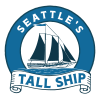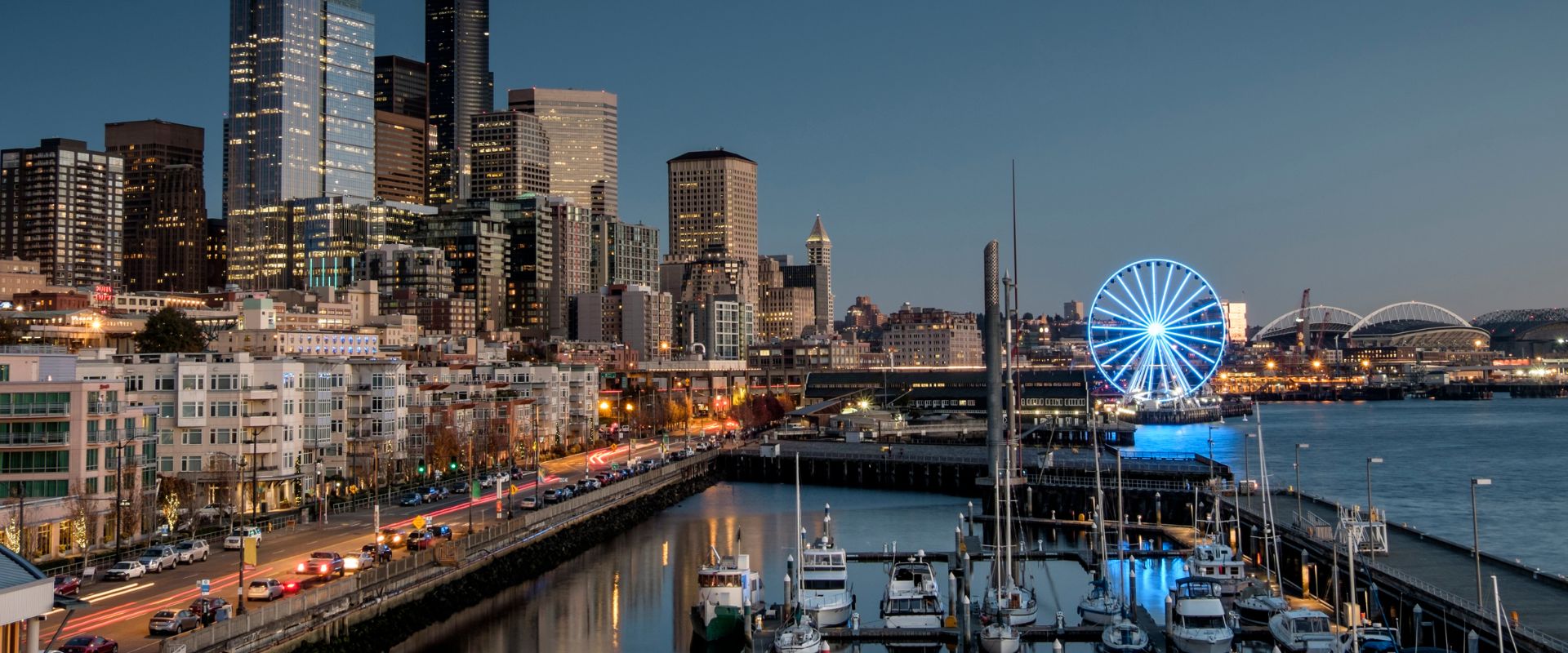
Why Seattle’s Waterfront Belongs on Your Itinerary
Seattle’s waterfront is a central part of the city’s identity. It connects visitors with the region’s maritime culture, offers access to public spaces and historic sites, and serves as a starting point for exploring Puget Sound.
If you’re planning a trip, this part of the city delivers a high concentration of value in a compact, walkable layout. From dining and museums to green spaces and water access, Seattle’s waterfront provides an efficient and rewarding use of time for travelers.

Walking Seattle’s Waterfront: A Practical Self-Guided Tour
A walk along Seattle’s waterfront from Pier 56 to Pier 70 provides a good overview of what the area has to offer. You’ll pass key attractions including Ivar’s Acres of Clams, the Seattle Aquarium, and the Seattle Great Wheel. These spots are well-established and easy to access without advance booking.
Miner’s Landing adds additional entertainment and dining options. There are casual walk-up counters, souvenir shops, and access to the wheel platform. Along the way, Waterfront Park and other smaller public areas give you space to pause. If you only have one afternoon to spare, this walking route allows you to see the harbor, try local seafood, and explore without much planning.
Plan an Afternoon Around the Water
Seattle’s waterfront is best experienced over the course of a few hours. Start with lunch at Elliott’s Oyster House or The Crab Pot, both located directly on the water. Menu pricing reflects the location, but the service is fast and the views are among the best in the city.
After lunch, make time for a sail aboard Seattle’s Tall Ship. This traditionally rigged vessel departs from Pier 66 during the sailing season and offers a rare opportunity to experience Elliott Bay from the deck of a working tall ship. The trip delivers clear views of the Seattle skyline, Mount Rainier (on clear days), and the Olympic Mountains, all under full sail. It’s one of the most memorable ways to connect with the bay. Once ashore, head north to Olympic Sculpture Park or Myrtle Edwards Park to wind down with an easy walk or a sunset view.

Looking for an unforgettable day on the water? Seattle’s Tall Ship’s “Bay Lady” offers a unique opportunity to experience the magic of tall ship sailing in the heart of Seattle. Step aboard this magnificent vessel and sail into history as you take in the beauty of Elliott Bay and the Seattle skyline. Don’t miss your chance to embark on a one-of-a-kind adventure—book your sail today!
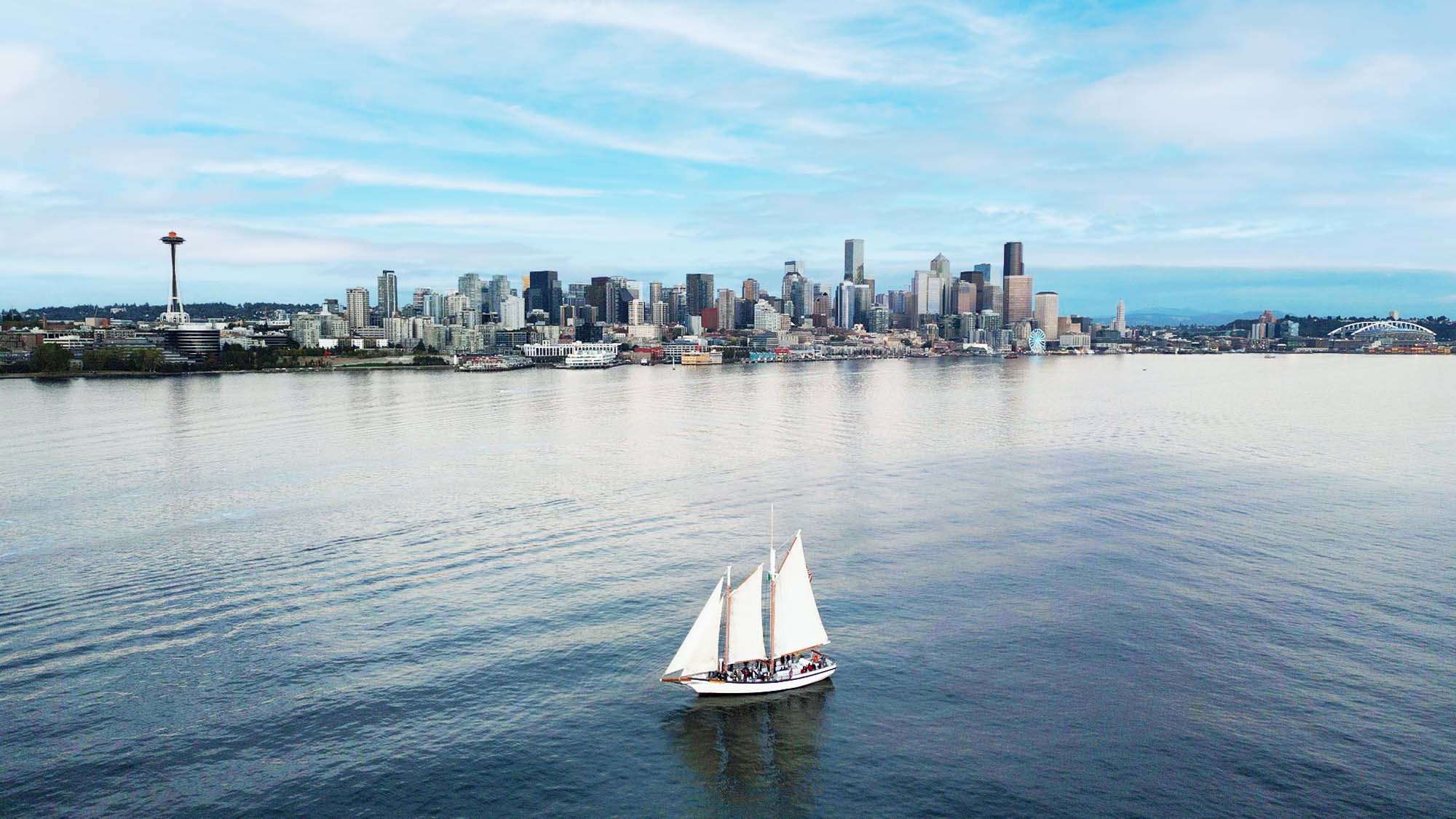
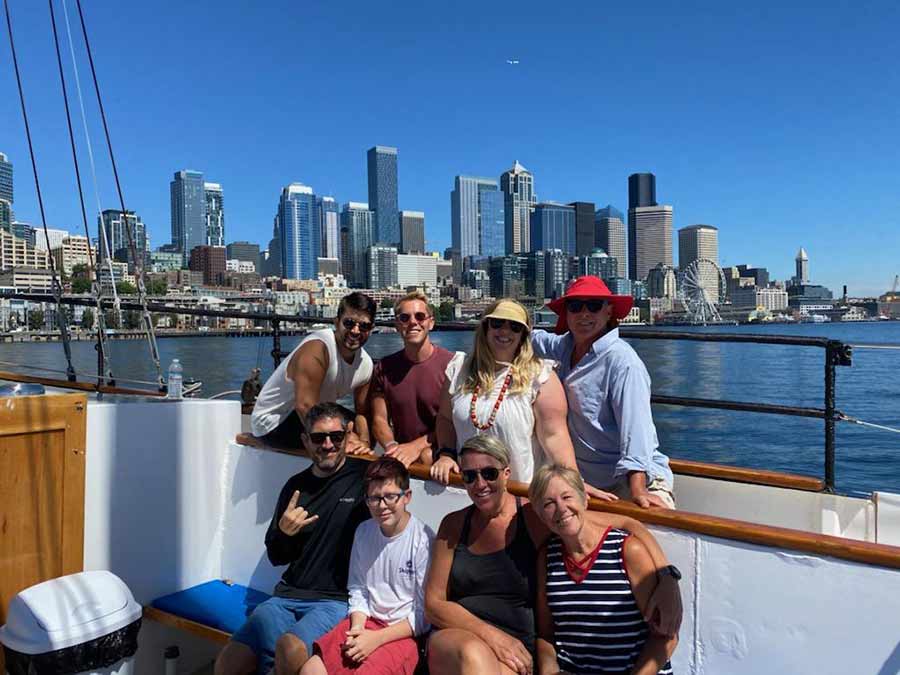

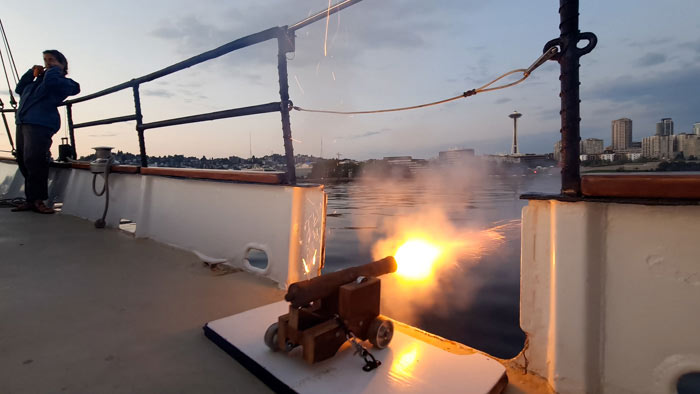
Guests enjoy the sights and sounds of a tall ship tour onboard Seattle’s Tall Ships, “The Bay Lady”.
Explore the Maritime and Cultural Institutions
Several museums and maritime centers near Seattle’s waterfront offer opportunities to explore Seattle’s history in more depth. The Museum of History & Industry (MOHAI), located at the southern end of Lake Union, covers topics ranging from shipbuilding and logging to aviation and local business. The exhibits are well-curated and accessible for general audiences.
Right next door, the Center for Wooden Boats maintains working docks and hands-on exhibits. Visitors can walk among traditional vessels or sign up for short rentals and sailing lessons. These institutions are part of the broader Maritime Washington National Heritage Area, which highlights the significance of working waterfronts throughout the Puget Sound region.


Local Advice: Getting Around and Staying Comfortable
Transit access to Seattle’s waterfront is simple. If you’re staying downtown, most points along the piers are within walking distance. For others, the Link Light Rail offers fast, direct service to Westlake Station, which is just a few blocks uphill. Driving is possible but not recommended due to limited and expensive parking.
Crowds build steadily after noon, especially on weekends. To avoid long lines at popular stops, consider starting your visit earlier in the day. If the weather turns, indoor options like the aquarium and waterfront cafés provide good cover. Even in summer, bring a light jacket. The breeze off the water can drop the temperature several degrees.
Why Seattle’s Waterfront Worth Your Time
Seattle’s waterfront combines public parks, working docks, historic institutions, and food access in a single walkable stretch. It gives travelers a direct connection to the city’s maritime roots without requiring a complicated itinerary.
Set aside a few hours. Walk, eat, sail, or just watch the ferries come and go. Seattle’s waterfront is one of the easiest places to spend time well while getting a true sense of place.

Book a sail with Seattle’s Tall Ship
If you have never experienced the thrill of sailing on our tall ship, there is no better time to try than now. With multiple sailing times and experiences available, our family-friendly harbor experiences are a must-do Seattle activity. Join us today!
